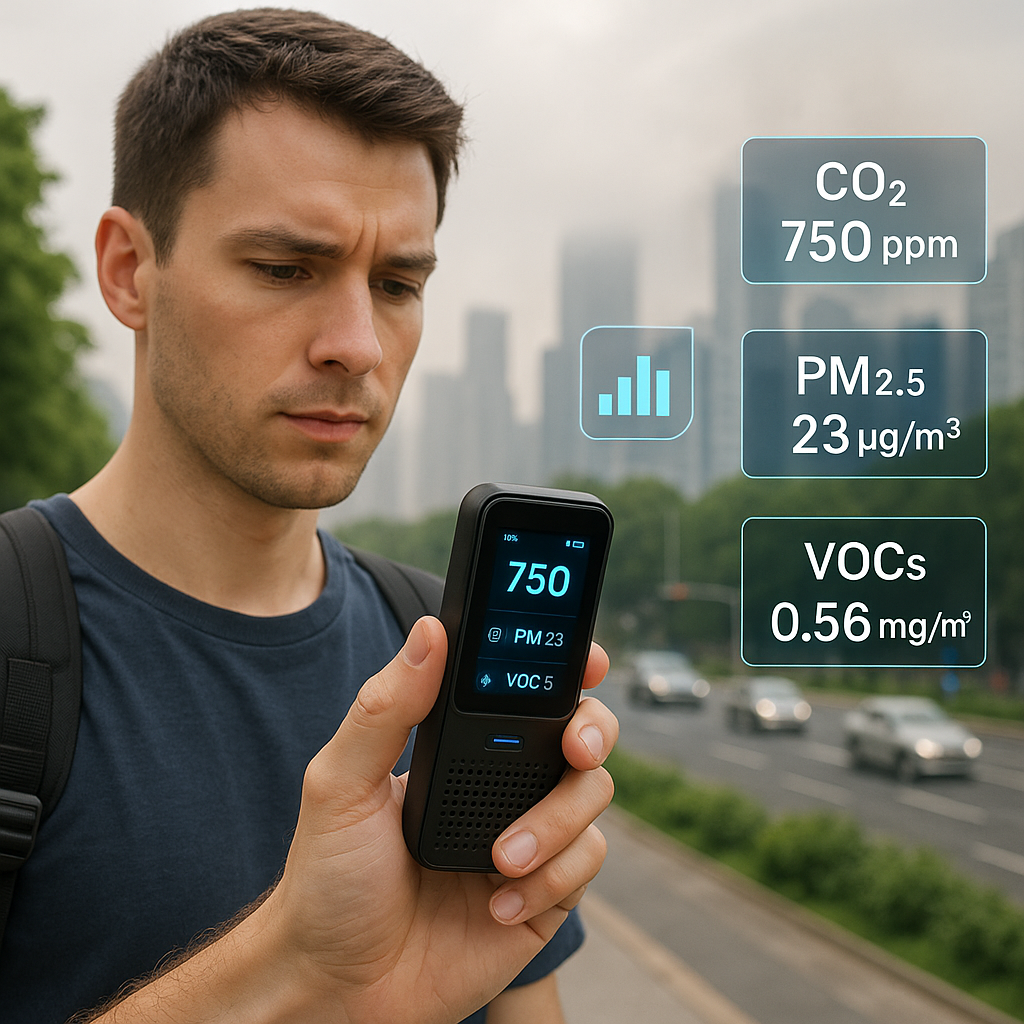We look after our food and water, but often neglect something crucial — the air we breathe. Clean air plays a vital role in our health, but pollutants, dust, and allergens can creep in unnoticed.
This explains the growing popularity of portable air-quality sensors. These clever compact devices allow us to monitor air quality in our surroundings — at home, outdoors, or during trips.
Let’s dive into their functioning, significance, and potential users.
📦 What Is a Portable Air-Quality Sensor?
A portable air-quality sensor is a compact, hand-held device that assesses air quality in real-time. It informs you if the surrounding air is clean or polluted by detecting:
- Dust and tiny particles (such as PM2.5 and PM10)
- Gases including carbon dioxide (CO₂) and nitrogen dioxide (NO₂)
- Harmful chemicals (known as VOCs – Volatile Organic Compounds)
- Temperature and humidity
These sensors link to your smartphone through Bluetooth and show results via an app.
🛠️ How Does It Work?
These sensors employ various technologies to measure air quality. Here’s an explanation:
- Particle sensors count dust and pollution in the air using light
- Gas sensors measure chemical presence by reacting to them
- Temperature and humidity sensors complete your air environment picture
The device gathers this data and displays it on your phone in an easy-to-read format. Some even offer health advice or warnings when air quality becomes too low.
📈 What’s Driving the Popularity of These Sensors?
We now know that poor air quality can damage your health if you have asthma, allergies, or other breathing problems. Even healthy individuals can experience fatigue or headaches in bad air.
Portable air sensors are in demand because they:
- Provide quick readings
- Function inside and outside
- Assist people in steering clear of polluted areas
- Can notify you to crack open a window or switch on an air cleaner
Whether you’re out for a run working , or on the road, they support you in making wiser choices.
👥 Who Can Benefit from One?
Handheld air-quality monitors are useful for:
- 👶 Parents – to protect children from polluted air
- 🧑💻 Remote workers – to boost indoor air quality for increased concentration
- 🌱 Health-conscious people – to minimize long-term exposure
- 🧳 Travelers – to assess air quality in new locations
- 🏫 Schools and offices – to build safer environments for all
Knowing what you breathe helps you plan better even if you’re in good health. This knowledge allows you to decide when to open windows, wear a mask, or avoid specific areas.
🔮 What’s Next for Air Sensors?
These clever gadgets are becoming more advanced. Future versions might include:
- Built-in GPS to keep tabs on air quality in different places
- AI tips that draw on your personal health info
- Smart home hookups to run fans, air cleaners, or windows without you lifting a finger
- Community groups that make data available for everyone’s good
The more folks who jump on board the more we can team up to create cleaner healthier cities.
